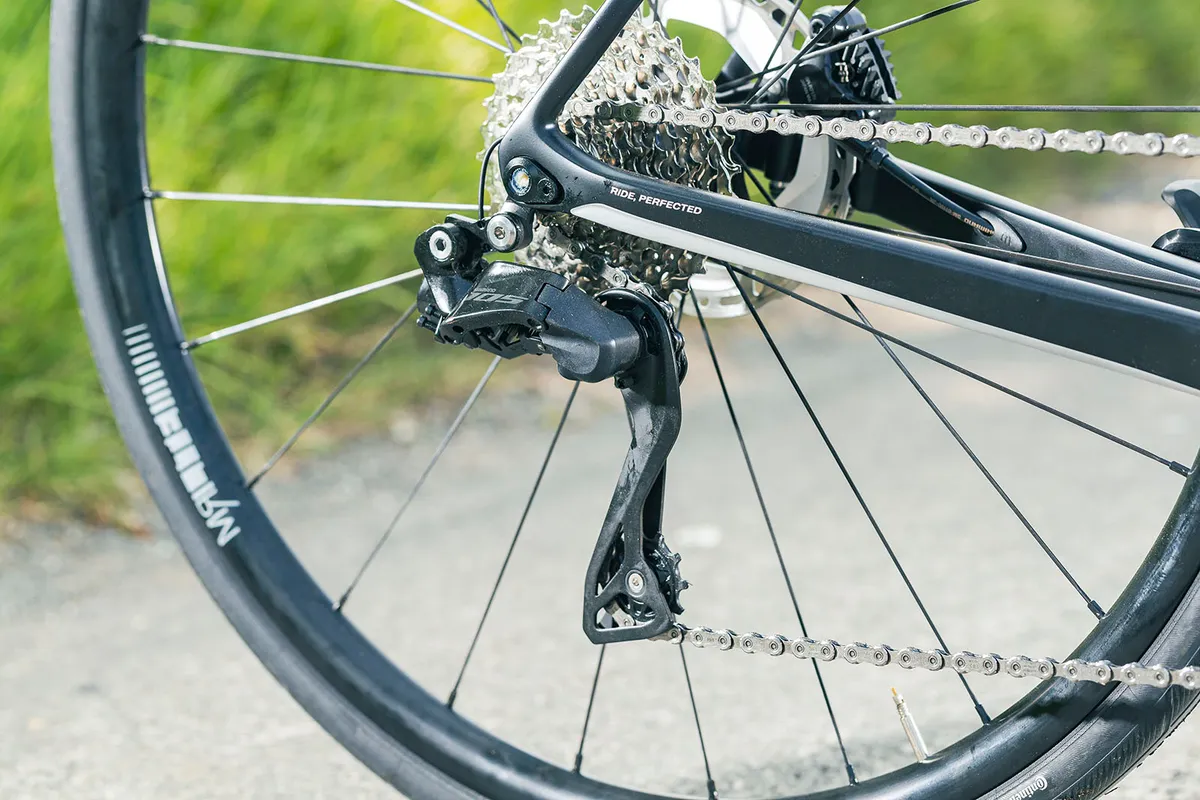In our Tech Q&A series, we tackle cycling queries – no matter how trivial – with insights from the BikeRadar team and some trusted industry experts. This time, a reader wants to know if there's any way of making shifting easier.
How can I make my shifting feel easier? It seems very stiff, do I need to replace the cables?
Wzarycki1
Before we consider shifting, it’s helpful to have a quick overview of how a gear system works on a mechanical derailleur.
There are screws on the derailleur, which limit how far the chain can move to the left or right of the cassette, thereby stopping it from falling off the largest or smallest cogs, but the remainder of the process comes down to a thin metal wire (gear cable) pulling against a large, coiled spring.
The gear cable is anchored at both the lever and the derailleur. The spring is in the derailleur body and controls the cage the chain runs through.
Every time you press the lever, it clicks and pulls or releases the cable by 1-2mm maximum.
Pulling the cable works against the spring, forcing it across the cassette and moving the chain to the larger cogs; releasing the cable releases the spring and the chain moves back to the smaller cogs.

The cable runs through a protective housing, with plastic ferrules covering the raw ends of the housing (a minimum of two on each housing).
As the housing and plastic ferrules bed into place, you can easily accumulate a millimetre or so of play (which will impact the shifting) and/or dirt, dust and general grime can find its way into the housing.
The stiff or delayed shifting can be from a number of causes, so it's worth being systematic as you go through them to eliminate them one by one.
An easy starting place is the point on the derailleur where the cable is locked off.
Make sure the little squished cable end cap is still in place. Once you cut a cable down to size, the threads of wire that make it up begin to fray unless they’re held in place with the end cap.
As the threads fray and unravel, the cable isn’t able to hold tension as securely and the effect is the same as reducing cable tension: the shifting will feel sluggish and less crisp.
The next option is to check the cable tension is where you need it to be – as we said, even a slight amount of play in the housing compared to when the tension was originally set will impact the shifting.
You can put the bike in a stand and watch how the cable moves as you turn the cranks and shift gear (you want it to go up and down the cassette evenly). Alternatively, you can just add a quarter-turn counter-clockwise (towards the front of the bike) on the barrel adjustor that sits in the cabling (or at the lever, depending on your system).
Adding a quarter-turn extends the length of the housing, thereby increasing the tension under which the cable is held.

That extra tension helps counteract the force of the spring in the derailleur.
If neither of those things work, you can rule out tension and it’s time to consider friction being caused inside the housing.
Make sure there are no kinks in the housing and it's not trapped anywhere.
If it’s all running freely, you can try spraying some lubrication down the housing.
If you’re going to the trouble of removing the cable to do that, it's probably worth replacing the cable itself – and potentially even the housing.
Do you have a cycling question you want answered? Every month, we’ll select the most interesting questions and bring you an expert-level response from our unparalleled access to the greatest minds in cycling, both on the BikeRadar staff and across the industry. Send your questions to podcast@bikeradar.com





